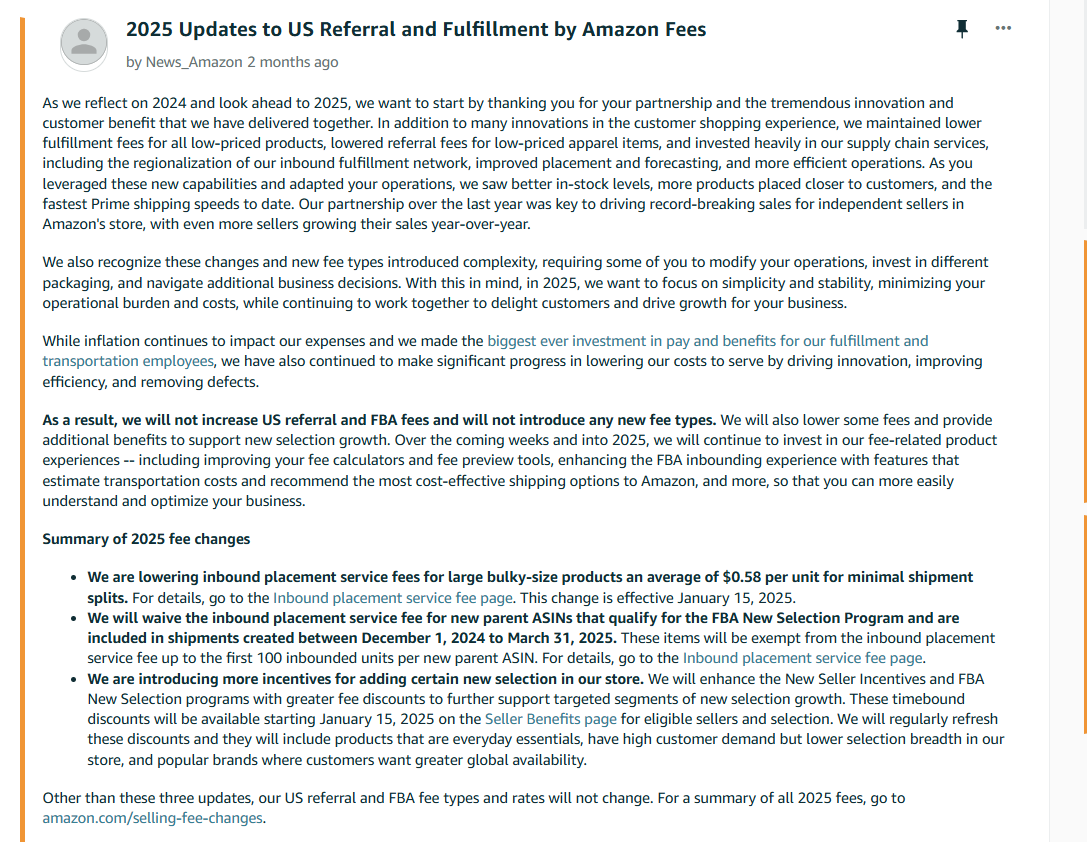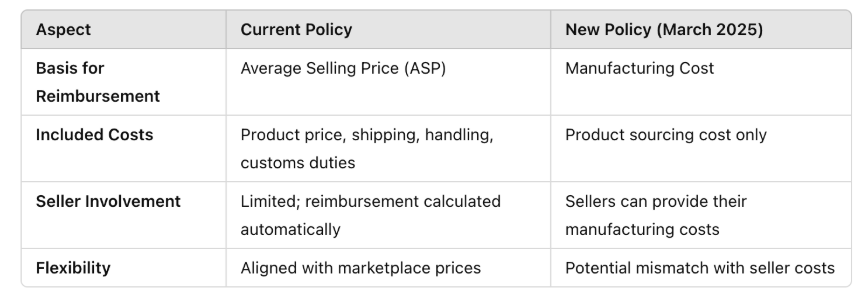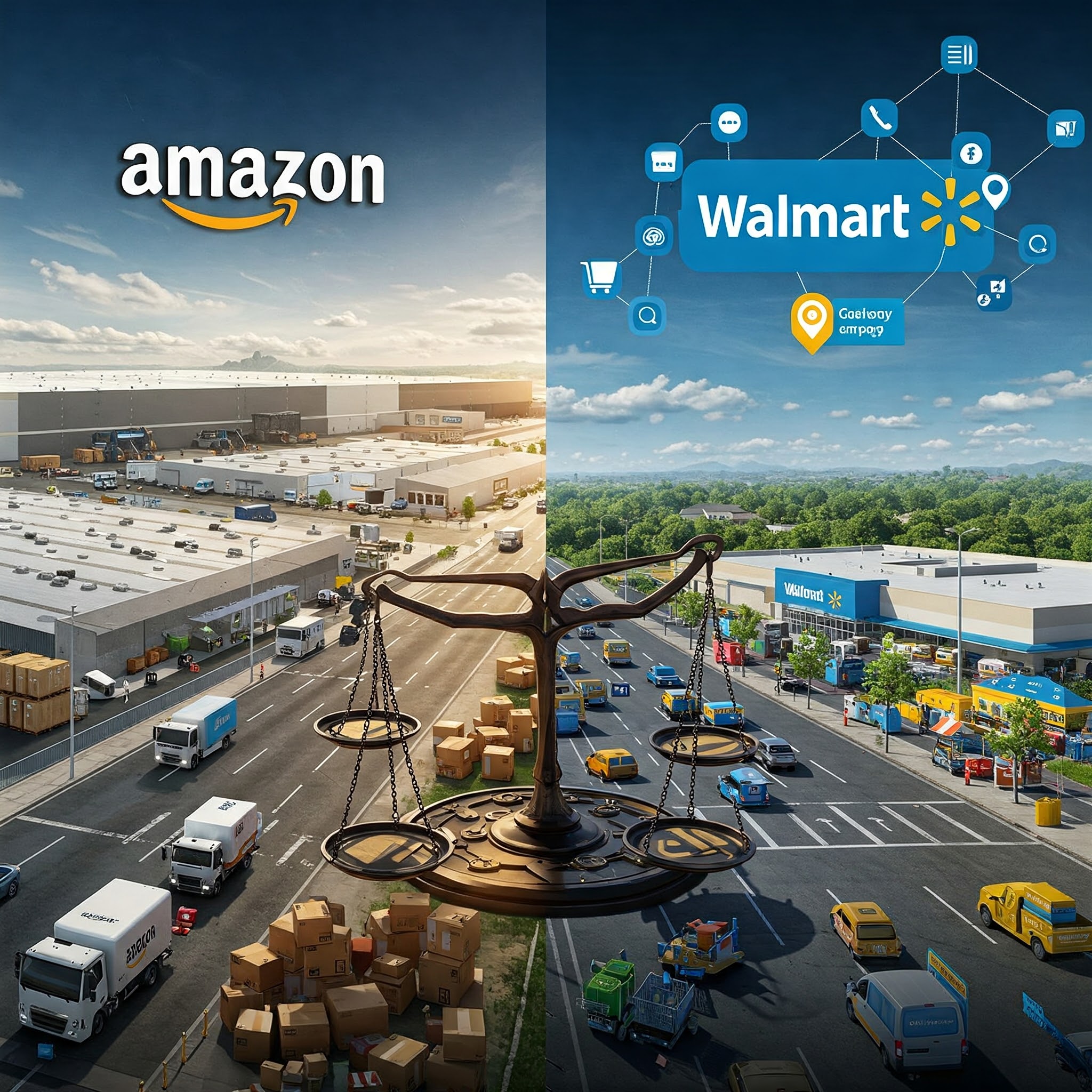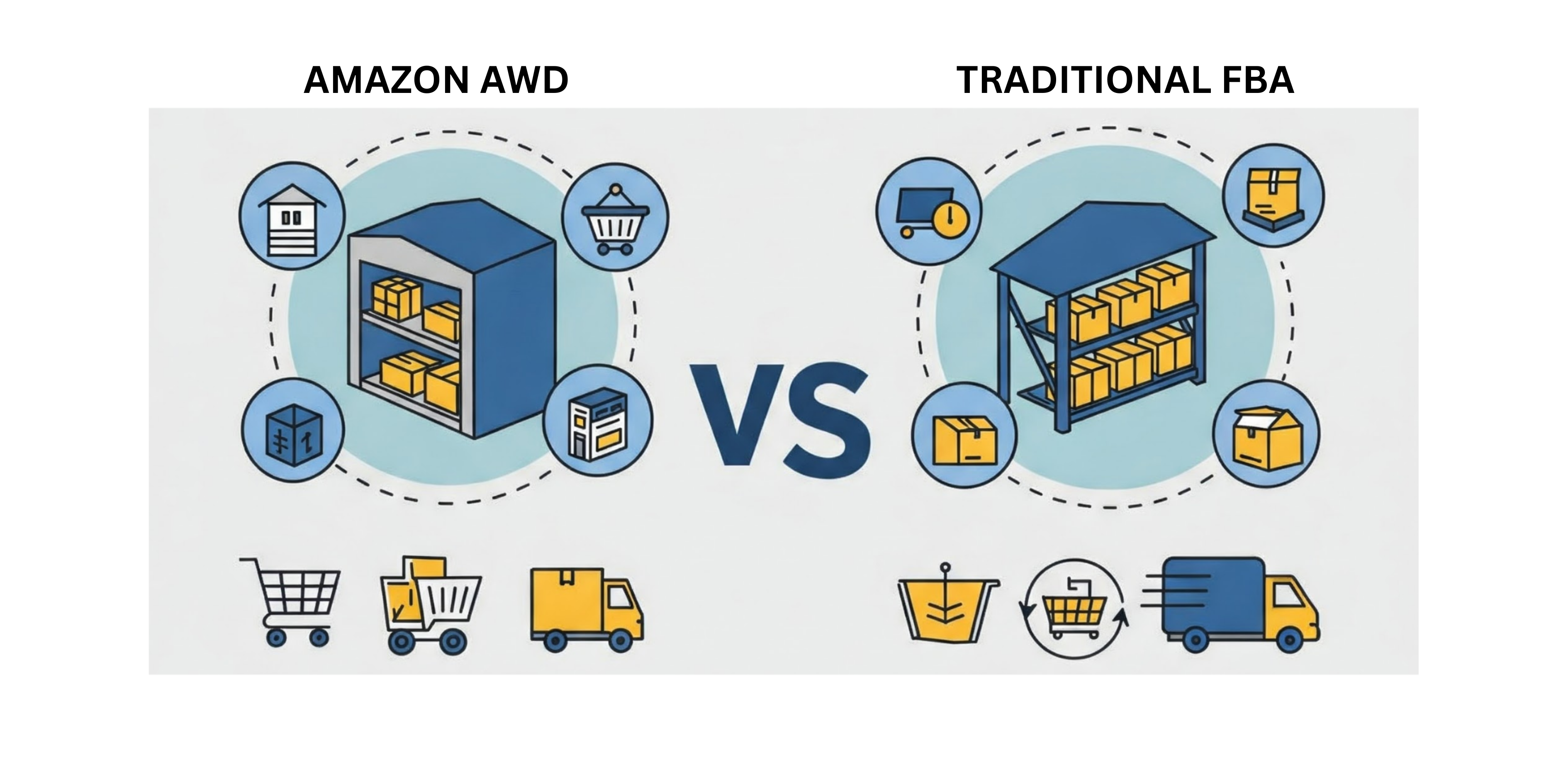Amazon's 2025 policy updates have sent ripples through the seller community, forcing businesses to rethink how they operate in this evolving marketplace. These changes, particularly to the Fulfillment by Amazon (FBA) inventory reimbursement policies, represent a seismic shift in how sellers are reimbursed for lost or damaged inventory. But are you prepared to adapt and thrive in this new landscape?
This blog dives deep into Amazon's policy updates, analyzing their impact on sellers and offering actionable strategies to navigate these changes. Whether you're a small business owner or a seasoned Amazon seller, understanding these updates is critical to staying competitive and profitable.

Overview of the 2025 Amazon Policy Updates
Key Policy Changes
Reimbursement Based on Manufacturing Cost
Starting March 10, 2025, Amazon will calculate reimbursements for lost or damaged inventory based solely on the manufacturing cost of the product. This excludes expenses like shipping, packaging, branding, and handling, significantly reducing the amount sellers receive.
Seller-Provided Cost Data
Sellers now have two options to determine manufacturing costs:
Amazon’s Estimate: An Amazon-calculated value based on similar products or wholesale data.
Seller-Provisioned Data: Sellers can submit their manufacturing cost, though this method comes with risks of disputes and undervaluation.
Exclusions of Critical Costs
Key costs like customs duties, freight charges, and storage fees are no longer covered, leaving sellers to absorb these losses.
Comparison: Old vs. New Policy
Impact on Sellers
Profit Margins Shrink: Sellers now face reduced reimbursements, directly impacting their profitability.
Increased Administrative Burden: Providing accurate manufacturing costs adds complexity to operations.
Small Businesses Hit Hardest: Handmade and custom product sellers suffer disproportionately due to the exclusion of branding and packaging costs.
Data Insights
A recent survey revealed that 65% of Amazon sellers expect a negative impact on their profit margins due to these updates, with 40% considering diversifying to other marketplaces.
The Hidden Costs of Exclusion: Beyond Manufacturing Costs
Why Shipping and Branding Matter
Amazon's decision to exclude shipping, handling, and branding costs from reimbursements disproportionately impacts sellers who invest in high-quality customer experiences. For handmade or luxury goods, where packaging and branding are part of the perceived value, these exclusions erode the profitability and appeal of such products.
Customs and Import Fees: The International Seller's Dilemma
Cross-border sellers face even steeper challenges. Costs like customs duties and international shipping fees are no longer reimbursed, effectively penalizing sellers who engage in global trade. This could deter sellers from expanding internationally, stifling market growth.
The Challenges of Adapting to the New Landscape
1. Cost Pressures
Amazon’s exclusion of shipping, handling, and packaging costs means sellers bear a larger financial burden. For instance, if your total product cost is $20, but manufacturing is only $10, you’ll now be reimbursed for half the value. This shift is particularly devastating for sellers of high-value or custom products.
2. Complexity in Compliance
Sellers must now accurately provide manufacturing cost data, which can be daunting. Errors could result in disputes, delays, or even penalties, creating additional stress for already overburdened businesses.
3. Data Vulnerabilities: The Double-Edged Sword of Cost Transparency
The Risk of Data Misuse
Amazon’s requirement for seller-provided manufacturing costs raises concerns about competitive fairness. Sellers fear that submitting detailed cost breakdowns could unintentionally fuel Amazon’s private-label initiatives, as the company gains insights into supplier pricing and production processes.
Inflated Costs: A Potential Gray Area
Some sellers might feel compelled to inflate reported manufacturing costs to compensate for the excluded expenses. This creates a gray area where sellers risk penalties for inaccuracies while still struggling to recoup actual losses.
4. Global Seller Implications
Cross-border sellers face unique challenges, such as navigating customs fees and logistics. With fewer reimbursements and higher operational costs, their margins are under greater pressure.
Strategies to Adapt and Thrive
1. Streamline Inventory Management
Managing inventory efficiently can mitigate risks:
Focus on Turnover: Regularly assess which products are moving quickly and avoid overstocking slow sellers.
Leverage Automation: Use inventory tracking tools to reduce errors and prevent stockouts.
2. Invest in Private Label Insurance
Private label insurance can offset the losses from damaged or lost inventory. It’s a safeguard for small businesses against unforeseen financial risks.
3. Explore New Marketplaces
Diversifying beyond Amazon is a must:
Walmart Marketplace and Shopify offer competitive opportunities for growth.
Expanding to multiple platforms reduces reliance on Amazon, cushioning the impact of its policy changes.
4. Negotiate Supplier Costs
Work with suppliers to lower manufacturing costs:
Bulk orders or renegotiating terms can reduce expenses.
Explore alternative suppliers who can provide quality at a lower price.
5. Optimize Product Listings and Advertising
Boosting sales through optimized listings and ads can help recover lost profits:
Use high-quality images, compelling descriptions, and relevant keywords.
Focus on Amazon PPC campaigns to increase product visibility and conversions.
6. Adopting Advanced Analytics Tools
Data-driven decisions can significantly improve profitability. Tools like Sellerboard, AMZScout, and Helium 10 provide insights into inventory turnover, pricing trends, and sales performance, enabling sellers to optimize strategies.
7.Leveraging PDMG for Professional Support
Adapting to Amazon’s evolving policies can be daunting, but PDMG is here to simplify the process. With expertise in reimbursement audits and strategic planning, we help sellers identify and recover eligible losses while optimizing their operations for sustained profitability. Our tailored guidance ensures that sellers not only meet the challenges posed by the new reimbursement policy but also uncover opportunities for growth. Trust PDMG to provide the professional support needed to navigate these changes with confidence and success.
Future-Proofing Your Amazon Business
1. Long-Term Strategies
Agility: Stay informed about policy changes and adapt quickly.
Innovation: Regularly improve products and processes to remain competitive.
Diversification: Reduce dependency on Amazon by building a strong presence on other platforms.
2. Opportunities Ahead
While challenging, these changes present opportunities for sellers to refine their operations and enhance profitability.
The Broader E-Commerce Landscape: Is Amazon Still the Best Option?
Comparing Marketplace Benefits
Walmart Marketplace: Lower fees and a growing customer base make it a strong contender for sellers looking to diversify.
Shopify: Complete control over branding and customer experience attracts sellers aiming to create long-term brand equity.
Evaluating Amazon’s Value Proposition
Despite its challenges, Amazon’s massive customer base and logistics network remain unmatched. Sellers must weigh these benefits against the growing risks and costs of staying on the platform.
Conclusion
Amazon’s 2025 policy updates represent a significant shift in the e-commerce landscape. By limiting reimbursements to manufacturing costs, Amazon places a heavier burden on sellers, forcing them to absorb additional expenses. However, this challenge can be an opportunity for growth for those who adapt effectively.
Don’t navigate these changes alone—let PDMG help you reshape your strategies for profitability. Schedule a consultation today!





